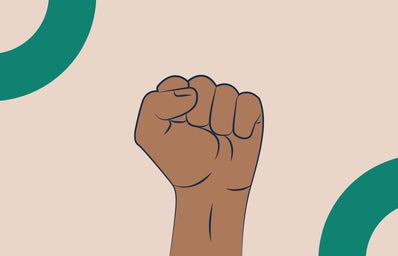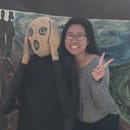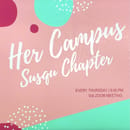The past is not as distant as we believe it to be. In fact, it is at our fingertips with books. It’s the stories we hear from our families about an ancestor. It is possible to say that we are a key to our past, but it is our choice to turn it and do something with what we see. The past is always somewhere in our mind. Daily thoughts about the what-ifs. Or in my case, the trip to the past was a trip to a museum.
I took a trip to the National Museum of African American History and Culture with a bunch of other students in February. One of the reasons was for National Black History Month. Another reason is that I was joining with a club that works to connect students of color with opportunities with alumni, employers, and networking opportunities.
It had been a few months since I last went to a museum. Last time, I was in Philadelphia in order to visit the Philadelphia Museum of Art and then, the Mütter Museum. This time, I went on a four-hour bus trip to Washington, D.C. I cannot even remember the last time I went to Washington, D.C. I heard my mom tell me stories about it once in a while, but I was super young at the time. My memory of the time faded and eventually disappeared, leaving only the memories of others to permeate the empty spot. So, this trip, I decided to make my own memories and learn from this museum.
We were advised to start from the bottom and slowly climb to the top. In fact, that is the way the museum intended for its visitors to see everything. It was overwhelming because, in a way, it was easy to get lost in the crowds of people. However, I made it eventually to the bottom. While there are a lot of people and noise, it gets close to silent in each section of the bottom. I could hear murmurs sometimes, but the silence was eerie.
It is a very grave. When you walk around, you see history that may not have been as present in the education system. It was overwhelming. Fact after fact that I would not have known unless I came there, or unless I did some intense research online. But as the elevator man said, we were taking a trip to the past from the 1400s and onward.
I saw the impact it had on families. There was a mom telling her child what racism was. And this is a child, but the impact that their history had on their family was severe. I saw tears being shed every once and a while. I saw children innocently reading out loud a paragraph about lynching. African American history is not easy to approach, and I realize that what I am saying is understating the actual occurrences. But I left that floor noting the significance this museum had for them. Because their story was told.
As we went up the floors, the mood changed little by little. We saw progress made by the African American community. We saw STEM making its way into the museum. We saw how people made contributions through sports and other forms of entertainment. In fact, my favorite part of the museum was the fourth floor. Everything brightened up as soon as we headed in the gallery. There were neon lights and all sorts of pop culture references. There was this energetic music that made you want to dance. It was a fun way to celebrate some of the cultural successes.
In many ways, there is a spark for inspiration. It shows that change will happen eventually. Unfortunately, change can be slow. Fortunately, there is some change that can be seen. And the world continues little by little. There is still a chance for more change. In the end, there is much to be said about a museum like this. It promotes the good as well as what happens even in the darkest moments.



